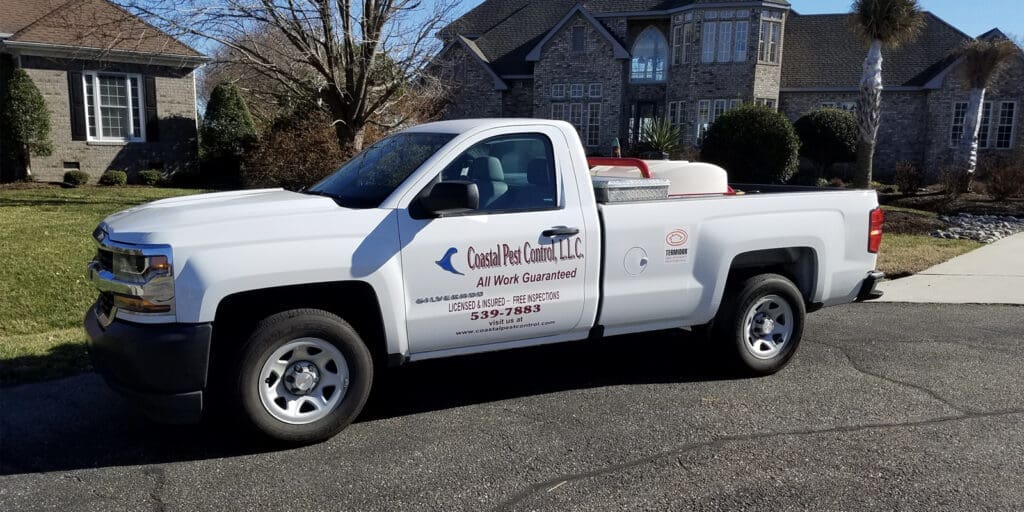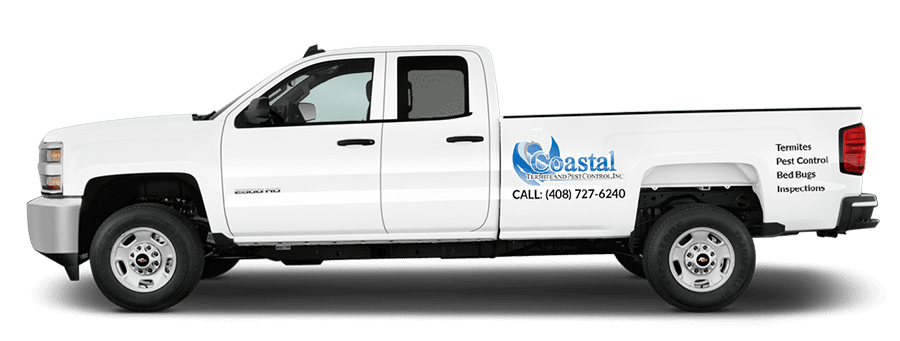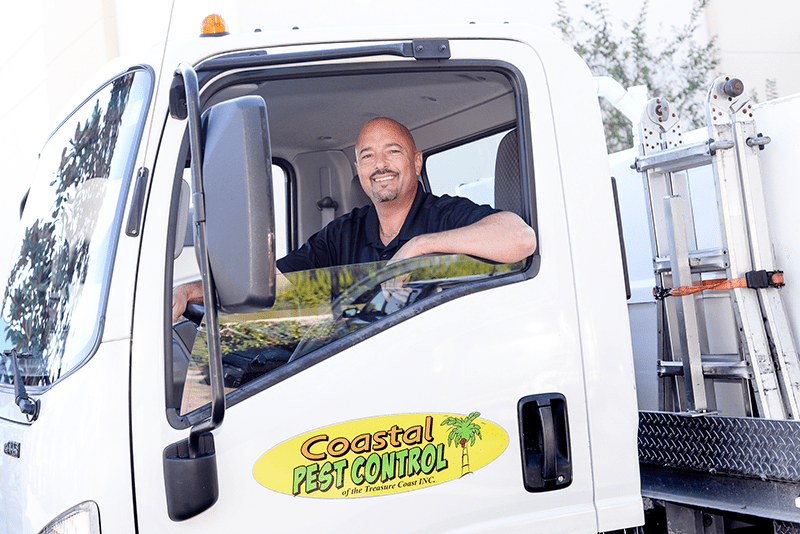Living in a coastal area certainly has its perks, with beautiful beaches and stunning ocean views. However, it also brings along some unwanted guests in the form of pests. Pests in coastal areas can be a nuisance and can even pose health risks. In this article, we will explore effective pest control solutions specifically tailored for coastal areas. Whether you’re dealing with pesky mosquitoes or persistent rodents, we’ve got you covered with tips and recommendations to keep your coastal paradise pest-free. So, sit back, relax, and let’s dive into the world of pest control in coastal areas!
Common pests in coastal areas
Termites
Termites are one of the most common pests found in coastal areas. They thrive in humid environments and are attracted to wood and moisture. Termites can cause extensive damage to structures, including homes, by feeding on the wooden components. It is important to be proactive in termite control to prevent costly damage in coastal areas.
Mosquitoes
Mosquitoes are notorious pests in coastal areas, especially during the warmer months. Coastal regions provide the ideal breeding grounds for mosquitoes due to the presence of standing water. Mosquitoes not only cause itchy bites but also pose a health risk as they are known carriers of various diseases, including Zika virus and West Nile virus.
Ants
Ants are a common nuisance in coastal areas, particularly in kitchens and gardens. Coastal regions with an abundance of food sources and moisture attract different ant species. From sugar ants to fire ants, these insects can invade your home, contaminate food, and cause damage to property. Effective ant control methods are essential in coastal areas to prevent infestations.
Cockroaches
Cockroaches are resilient pests that can thrive in coastal areas due to the damp conditions and availability of food sources. These nocturnal insects can pose serious health risks as they contaminate food and surfaces with bacteria, allergens, and pathogens. Efficient cockroach control measures are crucial to maintain a clean and healthy living environment.
Flies
Flies are a common nuisance in coastal areas, attracted to the moist and warm conditions. They can quickly become a nuisance and contaminate food with their presence. Apart from being annoying, flies are capable of spreading diseases, including salmonella and E. coli. Proper fly control measures are necessary to prevent infestations and maintain a hygienic living space.
Factors influencing pest populations in coastal areas
Humidity
High humidity levels in coastal areas create the perfect breeding ground for various pests. pests like termites and cockroaches thrive in humid environments and can multiply rapidly. Controlling indoor humidity levels by using dehumidifiers and proper ventilation can help reduce the pest population.
Temperatures
Coastal areas often have warm temperatures throughout the year, providing favorable conditions for pests to thrive. Mosquitoes, ants, and flies are particularly active in warm temperatures. Regular cleaning and maintenance, along with effective pest control measures, are essential to prevent infestations in these areas.
Proximity to water bodies
Coastal areas are characterized by their proximity to water bodies, which attracts pests such as mosquitoes and flies. Mosquitoes lay their eggs in stagnant water, while flies are attracted to the moisture near coastal regions. Implementing proper drainage systems and removing standing water can greatly reduce the pest population.
Availability of food sources
The abundance of food sources in coastal areas, such as garbage and organic matter, attracts pests like ants and cockroaches. Proper waste management practices, such as using sealed trash cans and regular garbage disposal, are vital to minimize the availability of food sources for pests.
Presence of vegetation
Coastal areas often have lush vegetation, providing shelter and food for various pests. Vegetation near buildings can attract pests like termites and ants, leading to potential infestations. Regular trimming and maintenance of vegetation can help deter pests and reduce the risk of infestation.

Preventive measures for pest control in coastal areas
Sealing entry points
One of the most effective ways to prevent pests from entering your home in coastal areas is to seal all potential entry points. Inspect your doors, windows, and foundation for any gaps or cracks that can serve as entry points for pests. Seal these openings with caulk or weatherstripping to create a barrier against pests.
Reducing moisture levels
Since moisture attracts pests like termites and cockroaches, it is crucial to reduce moisture levels in coastal areas. Fix any leaks or plumbing issues promptly, and ensure proper drainage around your property. Use dehumidifiers in humid areas of your home to control moisture levels and discourage pests from thriving.
Proper waste management
In coastal areas, where pests like ants and flies are attracted to food sources, proper waste management is essential. Use sealed trash cans and dispose of garbage regularly to prevent pests from accessing food. Keeping outdoor areas clean and free from food debris will also help in controlling the pest population.
Regular cleaning and maintenance
Regular cleaning and maintenance of your home are crucial for pest control in coastal areas. Vacuum and sweep regularly to eliminate crumbs and debris that can attract pests. Pay special attention to kitchens and bathrooms, as these areas tend to have higher moisture levels.
Trimming vegetation
As mentioned earlier, the presence of vegetation near buildings can invite pests. Regularly trim trees, shrubs, and other plants near your home to eliminate potential hiding spots for pests. This will also help improve ventilation around your property and reduce the risk of pests finding their way indoors.
Natural pest control methods in coastal areas
Beneficial insects
Introducing beneficial insects into your coastal area can help control pest populations naturally. Ladybugs, praying mantises, and lacewings are examples of beneficial insects that feed on pests like aphids and mosquitoes. Planting flowers and herbs that attract these beneficial insects can create a balanced ecosystem and reduce the need for chemical pest control methods.
Repellant plants
Certain plants naturally repel pests due to their strong scent or properties. For instance, citronella plants can help deter mosquitoes, while mint plants can repel ants and flies. Planting these repellant plants in your garden or near entry points can act as a natural deterrent against pests.
Essential oils
using essential oils can be an effective natural pest control method in coastal areas. Essential oils like lavender, peppermint, and tea tree oil have insect-repellent properties. Dilute these oils with water and spray around your home to deter pests. Avoid using undiluted oils directly on surfaces, as they may cause damage.
Diatomaceous earth
Diatomaceous earth is a natural, abrasive powder made from the fossilized remains of diatoms. It can be sprinkled in areas where pests are likely to crawl, such as cracks and crevices. When pests come into contact with the diatomaceous earth, it damages their exoskeleton, leading to dehydration and death.
Biological controls
Biological controls involve using living organisms, such as nematodes or bacteria, to control pest populations naturally. For example, beneficial nematodes can be applied to the soil to control populations of pests like grubs and ants. Biological controls are environmentally friendly and pose minimal risk to humans and beneficial insects.

Chemical pest control methods in coastal areas
Insecticides
Insecticides are chemical formulations designed to kill or control pests. They can be applied as sprays, dusts, or baits. In coastal areas, insecticides may be necessary for effective pest control, especially for stubborn pests like termites and cockroaches. However, it is important to use insecticides responsibly and strictly follow the instructions on the label.
Pesticide sprays
Pesticide sprays are commonly used to control flying insects like mosquitoes and flies. These sprays contain chemical compounds that can kill or repel pests upon contact. It is important to use pesticide sprays cautiously and only in areas where the pests are present, while ensuring the safety of humans and pets.
Residual treatments
Residual treatments involve applying insecticides to surfaces where pests are likely to come into contact. These treatments leave a residual effect, providing long-term control of pests. In coastal areas, residual treatments may be used to target pests like ants and cockroaches that frequently invade homes.
Fumigation
Fumigation is a method of pest control that involves sealing an area and introducing a fumigant, typically a gas, to exterminate pests. This method is often used for severe infestations or when other pest control methods have failed. Fumigation requires professional expertise and caution due to the potential risks involved.
Baits and traps
Baits and traps can be effective in controlling specific pests in coastal areas. Ant baits, for example, are designed to attract and kill ants and their colonies. Fly traps, on the other hand, use bait to lure and trap flies. These methods can be a safer alternative to chemical sprays and are often used in conjunction with other pest control measures.
Importance of professional pest control services in coastal areas
Identification and assessment of pests
Professional pest control services have the expertise to identify and accurately assess the types of pests present in coastal areas. This is essential for developing an effective pest control plan tailored to the specific needs of the area.
Safe and effective treatment options
Professional pest control services have access to safe and effective treatment options that may not be available to the general public. They use professional-grade products and techniques to control pests while minimizing the risk to humans, pets, and the environment.
Preventive measures tailored to specific pests
Professional pest control services can recommend and implement preventive measures specific to the pests found in coastal areas. They understand the behavior and habits of pests and can develop long-term strategies to prevent future infestations.
Reliable and long-term solutions
By hiring professional pest control services, you can expect reliable and long-term solutions for your pest problems. Professionals understand that controlling pests in coastal areas requires ongoing efforts and can provide regular maintenance visits to ensure the effectiveness of the treatments.
Compliance with regulations
Professional pest control services are well-versed in local regulations and guidelines for pest control in coastal areas. They adhere to these regulations and ensure that their treatments are environmentally friendly and compliant with all applicable laws.

Pest control strategies for specific pests in coastal areas
Termite control
Termite control in coastal areas is crucial due to the high risk of termite damage to structures. Professional pest control services can conduct thorough inspections to identify termite colonies and implement appropriate treatment methods, such as soil treatments or baiting systems, to eliminate termites.
Mosquito control
Mosquito control in coastal areas is essential to minimize the risk of mosquito-borne diseases. Professional pest control services can assess the breeding sites of mosquitoes and implement measures to eliminate or manage them. This may include treatments such as larvicides or misting systems to target mosquito populations.
Ant control
Controlling ant populations in coastal areas requires a multi-pronged approach. Professional pest control services can identify the ant species present and determine the most effective treatment methods, such as baits or residual sprays, to eliminate the ants and prevent future infestations.
Cockroach control
Cockroach control in coastal areas is crucial to maintain a clean and hygienic living environment. Professional pest control services can conduct thorough inspections to locate cockroach harborages and apply appropriate treatments, such as residual sprays or baits, to eliminate cockroaches and prevent their return.
Fly control
Fly control in coastal areas is important to prevent the spread of diseases and maintain a pleasant living space. Professional pest control services can implement measures such as fly traps, residual sprays, or misting systems to target and control fly populations in indoor and outdoor areas.
Tips for choosing the right pest control company in coastal areas
Experience and expertise
Choose a pest control company with extensive experience and expertise in dealing with pest control in coastal areas. Look for companies that specialize in coastal pest control and have a track record of successfully managing pests in similar environments.
Certifications and licenses
Ensure that the pest control company you choose has the necessary certifications and licenses to operate in your area. This ensures that they meet the required standards and have the knowledge and training to handle pest control safely and effectively.
Eco-friendly practices
Consider pest control companies that prioritize eco-friendly practices. Look for companies that use environmentally friendly products and techniques to minimize the impact on the environment while effectively controlling pests.
Customer reviews and testimonials
Read customer reviews and testimonials to get an idea of the quality of service provided by the pest control company. Positive reviews and satisfied customers are indicators of a reputable and reliable pest control service.
Guarantees and warranties
Inquire about the guarantees and warranties offered by the pest control company. A reputable company should stand behind their work and offer guarantees or warranties to ensure customer satisfaction.

Common mistakes to avoid in pest control in coastal areas
Ignoring early signs of infestation
Ignoring early signs of pest infestation can lead to a more severe infestation and greater damage. It is important to act promptly when you notice signs of pests, such as droppings, chewed wires, or insect sightings, to prevent further problems.
Using excessive pesticides
Using excessive amounts of pesticides can be harmful to the environment and may not effectively control the pest problem. It is important to use pesticides judiciously and follow the instructions provided by the manufacturer or pest control professional.
Failing to address underlying causes
Simply treating the symptoms of a pest infestation without addressing the underlying causes can lead to recurring pest problems. Identify and address the factors that attract pests, such as moisture or food sources, to prevent future infestations.
Not following safety guidelines
Pest control products can contain hazardous chemicals that may pose risks to humans, pets, and the environment. It is important to follow all safety guidelines provided by the manufacturer or pest control professional when using pesticides or other pest control methods.
Neglecting regular maintenance
Regular maintenance is crucial for effective pest control in coastal areas. Neglecting routine cleaning, repairs, and maintenance tasks can create favorable conditions for pests to thrive. Stay proactive and implement regular maintenance practices to prevent infestations.
Additional resources for pest control in coastal areas
Books and guides on coastal pest control
There are numerous books and guides available that provide comprehensive information on pest control in coastal areas. These resources can offer valuable insights and tips for managing pests specific to coastal environments.
Websites and blogs on pest identification and prevention
Explore online resources such as websites and blogs that specialize in pest identification and prevention. These sources often provide detailed information on different pests, their behaviors, and effective prevention methods.
Local pest control associations and agencies
Local pest control associations and agencies can be valuable sources of information and assistance for pest control in coastal areas. They often provide resources, training, and guidance to both homeowners and pest control professionals.
Educational videos and webinars
Educational videos and webinars are excellent resources for learning about pest control in coastal areas. These visual resources can provide step-by-step instructions, demonstrations, and expert advice on various pest control methods.
Expert consultation services
If you need personalized advice or assistance with pest control in coastal areas, consider seeking expert consultation services. These services provide tailor-made solutions and recommendations based on your specific pest control needs and requirements.


I am Randy, the author behind PestControld.com. Drawing from decades of experience, I aim to provide valuable insights, expert advice, and practical recommendations to help you make informed decisions when assessing viable pest control solutions.